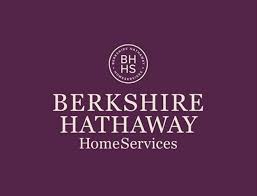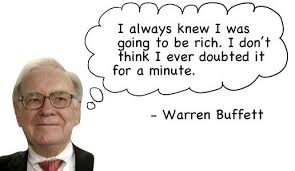Warning!
‘CFDs are complex instruments and come with a high risk of losing money rapidly due to leverage. Between 74-89% of retail investor accounts lose money when trading CFDs. You should consider whether you understand how CFDs work and whether you can afford to take the high risk of losing your money.’
In 1962, Buffett became a millionaire because of his partnerships, which in January 1962 had an excess of $7,178,500, of which over $1,025,000 belonged to Buffett. He merged these partnerships into one. Buffett invested in and eventually took control of a textile manufacturing firm, Berkshire Hathaway. He began buying shares in Berkshire from Seabury Stanton, the owner, whom he later fired. Buffett’s partnerships began purchasing shares at $7.60 per share. In 1965, when Buffett’s partnerships began purchasing Berkshire aggressively, they paid $14.86 per share while the company had working capital of $19 per share. This did not include the value of fixed assets (factory and equipment). Buffett took control of Berkshire Hathaway at a board meeting and named a new president, Ken Chace, to run the company. In 1966, Buffett closed the partnership to new money. He later claimed that the textile business had been his worst trade. He then moved the business into the insurance sector, and, in 1985, the last of the mills that had been the core business of Berkshire Hathaway was sold. Buffett wrote in his letter: “… unless it appears that circumstances have changed (under some conditions added capital would improve results) or unless new partners can bring some asset to the partnership other than simply capital, I intend to admit no additional partners to BPL.”

In a second letter, Buffett announced his first investment in a private business — Hochschild, Kohn and Co, a privately owned Baltimore department store. In 1967, Berkshire paid out its first and only dividend of 10 cents. In 1969, following his most successful year, Buffett liquidated the partnership and transferred their assets to his partners. Among the assets paid out were shares of Berkshire Hathaway. In 1970, Buffett began writing his now-famous annual letters to shareholders. However, he lived solely on his salary of $50,000 per year and his outside investment income. In 1979, Berkshire began the year trading at $775 per share, and ended at $1,310. Buffett’s net worth reached $620 million.
In 1973, Berkshire began to acquire stock in the Washington Post Company. Buffett became close friends with Katharine Graham, who controlled the company and its flagship newspaper, and joined its board. In 1974, the SEC opened a formal investigation into Buffett and Berkshire’s acquisition of WESCO, due to possible conflict of interest. No charges were brought. In 1977, Berkshire indirectly purchased the Buffalo Evening News for $32.5 million. Antitrust charges started, instigated by its rival, the Buffalo Courier-Express. Both papers lost money, until the Courier-Express folded in 1982.
In 1979, Berkshire began to acquire stock in ABC. Capital Cities announced a $3.5 billion purchase of ABC on March 18, 1985 surprising the media industry, as ABC was four times bigger than Capital Cities at the time. Buffett helped finance the deal in return for a 25% stake in the combined company. The newly merged company, known as Capital Cities/ABC (or CapCities/ABC), was forced to sell some stations due to U.S. Federal Communications Commission ownership rules. The two companies also owned several radio stations in the same markets.

In 1987, Berkshire Hathaway purchased a 12% stake in Salomon Inc., making it the largest shareholder and Buffett a director. In 1990, a scandal involving John Gutfreund (former CEO of Salomon Brothers) surfaced. A rogue trader, Paul Mozer, was submitting bids in excess of what was allowed by Treasury rules. When this was brought to Gutfreund’s attention, he did not immediately suspend the rogue trader. Gutfreund left the company in August 1991. Buffett became Chairman of Salomon until the crisis passed.
In 1988, Buffett began buying The Coca-Cola Company stock, eventually purchasing up to 7% of the company for $1.02 billion. It would turn out to be one of Berkshire’s most lucrative investments, and one which it still holds.
